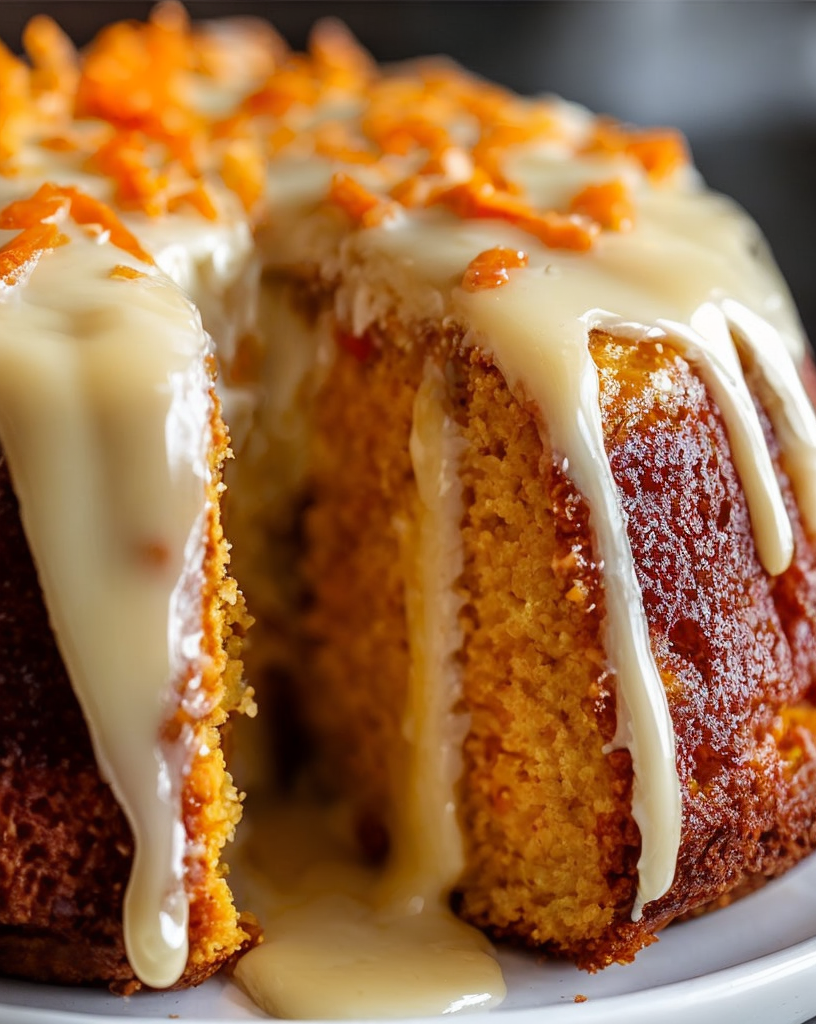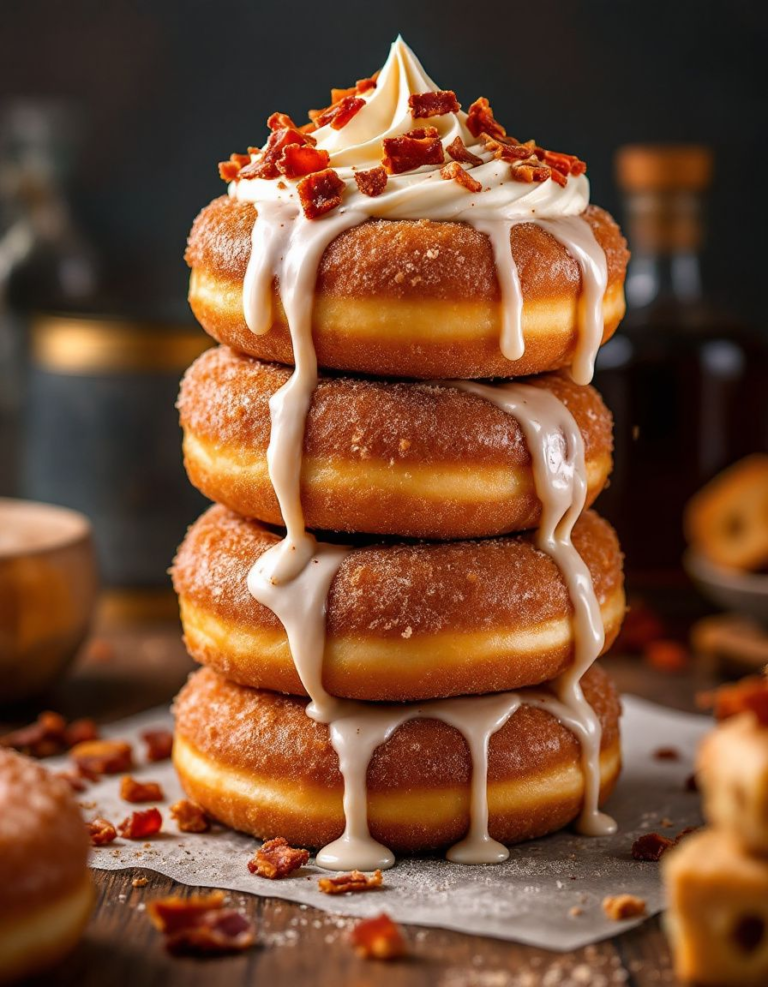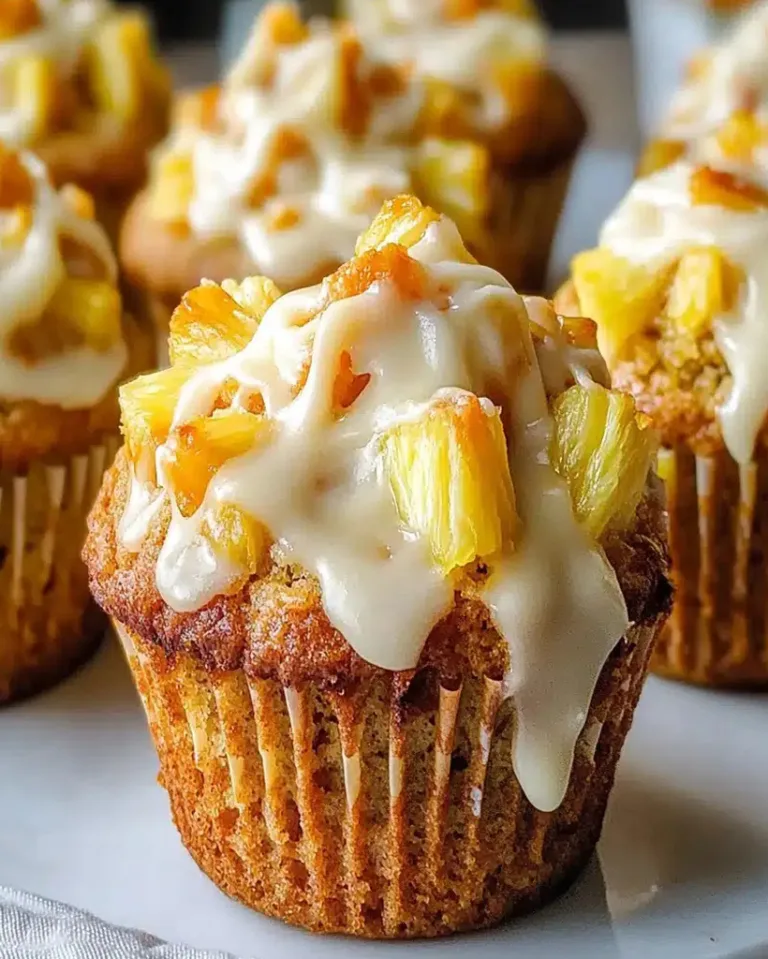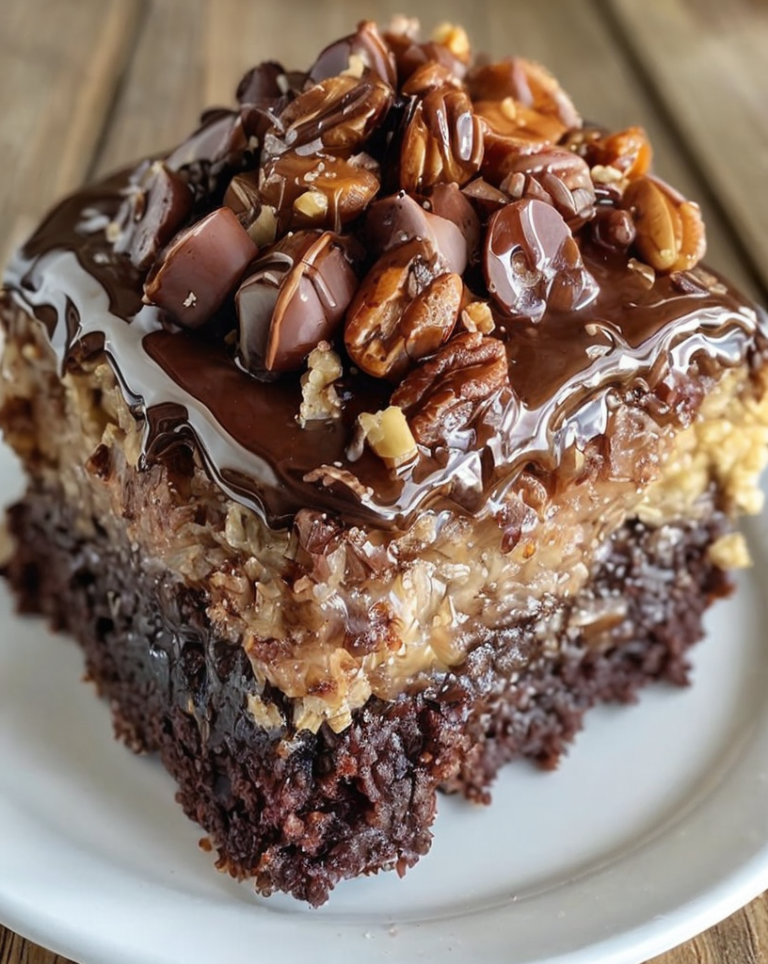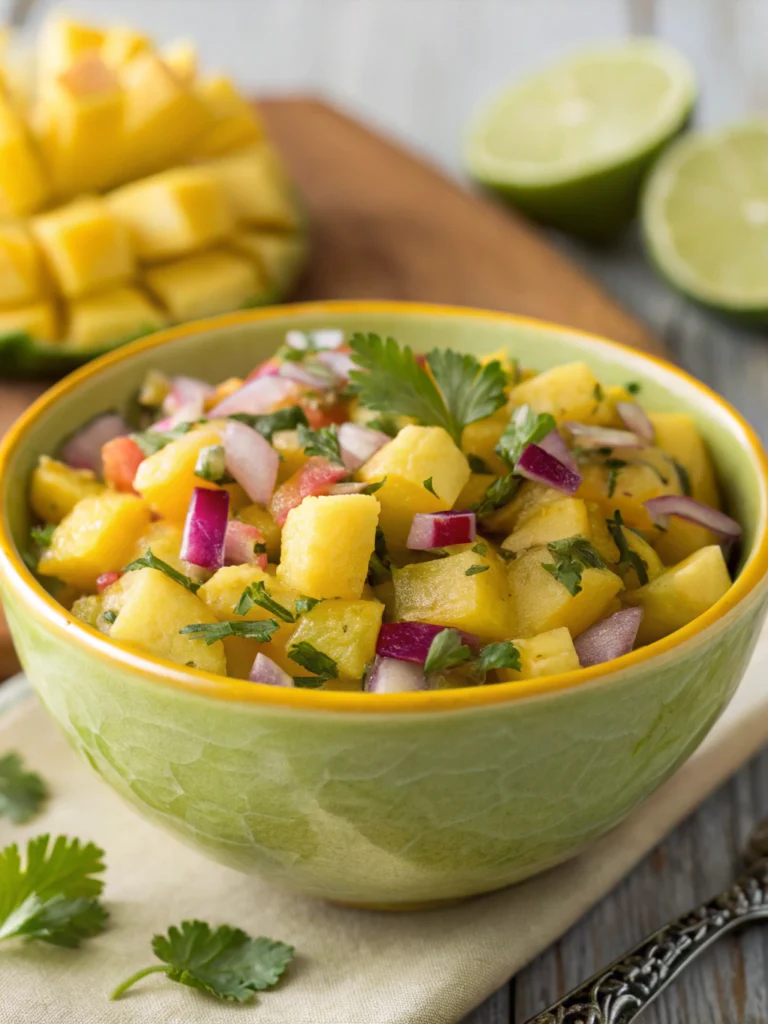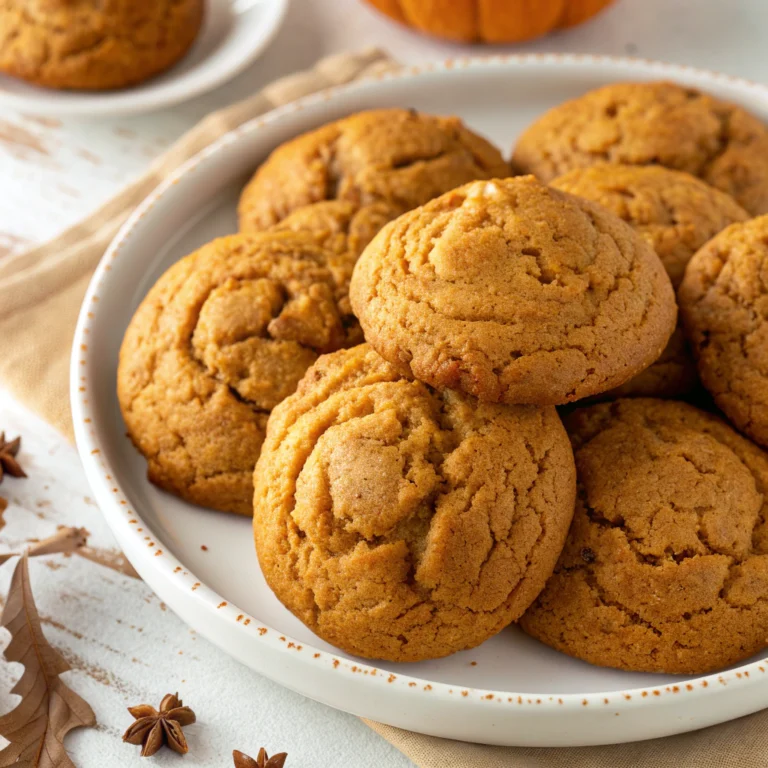Easy Carrot Pound Cake Recipe – Perfect for Dessert 🥕🍰
Carrot Pound Cake Recipe – Easy Dessert with Vanilla Glaze 🥕🍰
Experience a delightful blend of flavors with this moist and decadent Carrot Pound Cake topped with a smooth Vanilla Glaze. This easy-to-make dessert will captivate your senses with its rich taste and aroma, making it a perfect treat for any occasion. Whether you’re an experienced baker or a beginner, the simplicity of this recipe ensures a delicious outcome every time you bake it.
The Carrot Pound Cake boasts a harmonious balance of sweet and earthy flavors. The subtle sweetness from the carrots enhances the cake’s aromatic spices, making each bite a warming experience. Topped with a luscious vanilla glaze, this cake transforms into an irresistible dessert centerpiece for your table.
Enjoy a sensory feast starting with the inviting aroma of cinnamon and nutmeg as you bake the cake. The fragrant vanilla glaze complements the spices, filling your kitchen with an irresistible scent. Savor the soft crumb and moist texture, ensuring satisfaction with each bite. Its golden-brown crust and speckled interior make it as pleasing to the eye as it is to the palate.
Quick Recipe Highlights
- Flavor Profile: Expect a wonderful medley of sweet carrot, warm spices, and a subtle vanilla finish.
- Texture: Delightfully moist interior with a slightly crisp crust, providing a satisfying bite.
- Aroma: Aromatic spices such as cinnamon and nutmeg create a bakery-like scent that lingers in the air.
- Visual Appeal: The cake boasts a beautiful golden-brown hue, speckled with grated carrots and nuts.
- Skill Level Needed: Perfect for novices; little baking experience is required due to straightforward instructions.
- Special Equipment: A standard loaf pan and a mixing bowl are sufficient for this recipe.
Recipe Overview
- Difficulty Level: This Carrot Pound Cake is rated as ‘Easy’, requiring basic kitchen skills and common baking equipment.
- Category: It falls under desserts and baked goods, suitable for casual dining or special gatherings.
- Cuisine: While widely popular in Western cuisine, the cake also draws on traditional spice combinations.
- Cost: Moderate cost due to common pantry ingredients, with carrots and spices as the primary expenses.
- Season: Ideally enjoyed in autumn, but its cozy flavors make it suitable year-round.
- Occasion: Perfect for afternoon tea, family gatherings, or a homemade gift.
Why You’ll Love This Recipe
The taste and texture of our Carrot Pound Cake ensure you’ll want to bake it repeatedly. The incorporation of freshly grated carrots adds moisture and a natural sweetness, harmonizing with the spice mix to create a comforting dessert experience.
Convenience is a key feature of this recipe. With straightforward steps and simple ingredients, you can prepare the batter in merely 20 minutes. The baking process allows you time to relax, perhaps enjoying a cup of tea as the warm fragrances fill your home.
Nutritional advantages make this cake a surprisingly good choice. Carrots are rich in beta-carotene, which contributes beneficial antioxidants to your diet. Using ingredients like nuts can also provide healthy fats and a bit of a protein boost.
In social settings, this cake is a crowd-pleaser, offering a familiar yet exciting flavor that guests will appreciate. It’s a versatile addition to any dessert spread, complementing a variety of cuisines and occasions.
Cost-effectiveness means you can bake this cake without breaking the bank, using mostly staples from your cupboard and fridge. It’s an accessible recipe that’s forgiving on the budget yet impressive in its outcome.
Historical Background and Cultural Significance
Carrot cakes have roots deeply embedded in medieval history when sweeteners were scarce and carrots were used as a sugar substitute. This practice carried through to the 18th century, especially in Europe, marking the popularity of carrot cakes during times of rationing.
In many cultures, carrot cakes are celebrated for their moist texture and versatility, often enjoyed during special occasions and family gatherings. Over time, regional variations have emerged, with spices and nuts commonly added to enhance the flavor.
The recipe has evolved from being a simple wartime necessity to a beloved dessert globally. Today’s Carrot Pound Cake is a product of this evolution, retaining its core characteristics while offering culinary innovations such as various topping and filling options.
Regional variations might add local ingredients or tweak the spice mix to reflect cultural preferences, showcasing the adaptability and enduring popularity of the carrot cake across different cuisines.
Ingredient Deep Dive
Carrots, the star ingredient, hold cultural significance in many traditions due to their role in sustainability and versatility. With roots tracing back to Persia, carrots were prized for their sweetness and storage longevity.
Nutritionally, carrots are a powerhouse of beta-carotene, fiber, and vitamin K1, supporting eye health, digestion, and overall wellness. When selecting carrots, opt for firm, vibrant orange ones, as they indicate freshness and high nutrient content.
Store carrots in a cool, dark place to preserve their crispness, ideally in a perforated plastic bag within the refrigerator. If unavailable, substitute with other root vegetables like sweet potatoes for a similar texture and sweetness.
Flour serves as the cake’s structural base, providing the necessary gluten development for a successful bake. Aiming for all-purpose flour ensures a balance between tenderness and strength, suitable for creating a consistent crumb.
Common Mistakes to Avoid
- Over-mixing the batter can lead to a dense cake. Stir gently to combine ingredients.
- Skipping the sifting process will result in lumps of flour, affecting texture and rise.
- Using dry or old spices will diminish the cake’s aromatic impact; ensure they are fresh for optimal flavor.
- Forgetting to preheat the oven may disrupt the cake’s rise and overall texture, causing uneven baking.
- Neglecting to line the loaf pan can cause sticking; always use parchment paper or grease generously.
- Ignoring precise measurement of ingredients could alter the cake’s structure and taste.
- Omitting the cooling step might cause the glaze to melt incorrectly, affecting presentation.
- Improper glaze consistency can result in a runny or overly thick topping; adjust with milk or sugar as needed.
Essential Techniques
Creating the perfect glaze involves finding the right consistency. It’s important to gradually stir in milk to the powdered sugar until reaching a pourable but not too runny state. This assures a smooth finish without overwhelming the cake’s flavor.
One key technique is managing the carrot’s moisture content. After grating, lightly pat the carrots dry to prevent excessive moisture, which might alter the cake’s texture and baking time.
The creaming method is crucial when mixing sugar and butter, as it incorporates air to provide a lighter crumb. Monitor visual cues such as pale color and fluffy texture during this step.
Pro Tips for Perfect Carrot Pound Cake
Selecting quality carrots is essential. Opt for organic ones, as their natural sweetness enhances the cake’s flavor without additional sugar.
Incorporate a handful of chopped toasted nuts into the batter to add texture and complement the carrot’s sweetness with a nutty flavor.
Use whole-fat dairy products for a richer taste. Milk substitutes could affect the cake’s moistness and structural integrity.
Allow the cake to cool completely before applying the glaze to ensure even distribution and prevent the topping from sliding off.
Experiment with a mix of spices, such as allspice and ginger, to deepen the cake’s flavor profile, adding complexity to each bite.
Bake the cake on the middle rack to ensure even heat distribution, avoiding burnt edges or soggy centers.
Variations and Adaptations
Regional variations might include the addition of coconut flakes or pineapple for a tropical flair often appreciated in Southern-style carrot cakes. These add-ins provide pockets of sweetness and moisture.
For seasonal adaptations, consider incorporating cranberries or grated apple in the autumn, providing a tangy counterbalance to the sweet carrots and spices.
Dietary modifications such as using almond flour or a gluten-free blend can accommodate celiac-friendly diets. Substitute eggs with flaxseed gel for a vegan-friendly version, and soy or almond milk can replace dairy for lactose-intolerant needs.
Flavor variations are achieved by infusing the glaze with maple syrup or freshly squeezed orange juice instead of vanilla essence, adding a unique twist to traditional recipes.
Texture modifications could involve folding in a cup of shredded zucchini or beetroot, enhancing the cake’s moisture content while sneaking in added nutrition.
Serving and Presentation Guide
To elevate your presentation, slice the cake into even portions, arranging them elegantly on a rectangular platter. Consider garnishing with a sprinkle of crushed nuts or a light dusting of powdered sugar for visual contrast.
Pair the cake with a dollop of whipped cream or a scoop of vanilla ice cream for a delightful combination of warm and cold sensations. This complement enhances the cake’s moist crumb.
Highlight the dessert’s colors by serving on a white plate, allowing the golden and speckled hues of the cake to stand out. Options for traditional accompaniments include a warm chai latte or spiced cider, enhancing the cake’s aromatic spices.
Wine and Beverage Pairing
A crisp white wine like Riesling balances the sweetness of the carrot cake while enhancing the spices with its slight acidity. For non-alcoholic pairings, consider herbal teas like chamomile or a spiced chai to echo the cake’s warm flavors.
Coffee enthusiasts might enjoy an espresso as a counterpoint to the cake’s sweetness, while those preferring something lighter can opt for a refreshing lemon-infused sparkling water to cleanse the palate.
Temperature considerations are vital, ensuring beverages complement the room temperature of the cake and glaze, not overpowering its delicate flavors.
Storage and Shelf Life
Proper storage of the Carrot Pound Cake ensures it remains moist and flavorful. Store in an airtight container at room temperature for up to 3 days. For prolonged freshness, refrigerate for up to a week, opting for wrapping the cake tightly in plastic wrap before placing it in a container.
Freezing is an option for extended shelf life, allowing storage for up to three months. Slice the cake first for easy serving, individually wrapping each piece to avoid freezer burn. Always thaw in the refrigerator before serving to maintain texture integrity.
Make Ahead Strategies
Plan your baking by preparing the batter a day in advance, storing it, covered, in the refrigerator. This allows flavors to meld and savors fridge space for an easy bake day. Ensure to let the batter come to room temperature before baking.
For a seamless glaze application, prepare it ahead and store it in an airtight container in the fridge. Allow it to warm to room temperature before use, stirring to refresh its consistency.
Scaling Instructions
To scale the recipe up, double the ingredient quantities, being cautious of oven space and bake time extension. When doubling, consider dividing the batter between two loaf pans to ensure even baking. Halve the recipe for smaller gatherings, adjusting baking time by checking firmness earlier to prevent drying.
Additional baking pans or increased baking time may be necessary when tripling the recipe. Maintain ingredient proportionality to avoid altering taste and texture undesirably.
Nutritional Deep Dive
Each serving of Carrot Pound Cake provides a balanced mix of macronutrients, enriched by the natural sugars of carrots and the wholesome properties of added nuts. High in vitamins like A and fiber, the cake encapsulates healthful elements alongside indulgent flavors.
Emphasizing portions supports maintaining calorie control without sacrificing enjoyment, highlighting the cake’s ability to fit comfortably within diverse dietary lifestyles.
Dietary Adaptations
For gluten-free adaptations, employ a 1-to-1 gluten-free flour blend, ensuring the texture remains consistent without sacrificing structure.
Dairy-free consumers can utilize almond or coconut milk seamlessly within the recipe, preserving moisture while complementing the cake’s flavor.
A vegan version is achievable with flaxseed meal as an egg alternative and plant-based milk replacements. Increase leavening agents minimally if necessary to ensure the desired rise.
The Recipe
Carrot Pound Cake
Serves: 8-10
Prep Time: 20 mins
Cook Time: 55 mins
Total Time: 75 mins
Kitchen Equipment Needed
- Mixing Bowls
- Loaf Pan (9×5 inches)
- Grater
- Whisk or Electric Mixer
- Spatula
Ingredients
- 1 ½ cups all-purpose flour
- 1 cup grated carrots
- 1 cup granulated sugar
- ½ cup unsalted butter, softened
- 2 large eggs
- 1 tsp vanilla extract
- 1 tsp baking powder
- ½ tsp baking soda
- 1 tsp cinnamon
- ¼ tsp nutmeg
- ¼ tsp salt
- ½ cup chopped nuts (optional)
- For the glaze: 1 cup powdered sugar, 2-3 tbsp milk, and 1 tsp vanilla extract
Directions
- Preheat your oven to 350°F (175°C) and grease a 9×5 inch loaf pan.
- In a mixing bowl, whisk together flour, baking powder, baking soda, cinnamon, nutmeg, and salt.
- In a separate bowl, beat softened butter and sugar until light and fluffy. Add eggs one at a time, beating well after each addition, then mix in vanilla.
- Gradually add the flour mixture to the butter mixture, mixing just until combined.
- Fold in grated carrots and nuts until evenly distributed.
- Pour the batter into the prepared loaf pan, smoothing the top with a spatula.
- Bake for 55-60 minutes, or until a toothpick inserted into the center comes out clean.
- Allow the cake to cool in the pan for 10 minutes before transferring to a wire rack to cool completely.
- To make the glaze, whisk together powdered sugar, milk, and vanilla until smooth. Drizzle over the cooled cake.
Recipe Notes
- Feel free to add raisins or coconut flakes for added texture and sweetness.
- Adjust glaze consistency with additional milk or powdered sugar as needed.
Troubleshooting Guide
If you encounter texture issues, such as a dense or gummy cake, double-check ingredient measurements, particularly leavening agents and ratios. For flavor concerns, ensure spices are fresh, as stale spices can diminish the cake’s aromatic appeal.
Temperature problems such as overly browned edges might call for an oven calibration or repositioning the rack. Equipment challenges can arise if mixing bowls or tools are too small, leading to spills or uneven mixing.
Ingredient substitutions could alter the cake’s structural dynamics. When trying alternatives like gluten-free flours, expect possible variance in texture or rise. Timing concerns such as undercooked centers require an additional few minutes in the oven; cover with foil if browning too quickly.
Recipe Success Stories
Community feedback highlights the universal appeal of this Carrot Pound Cake, with many celebrating its simplicity and delightful flavor. A reader from Maine shared success by incorporating local cranberries for a seasonal touch.
Adaptation stories often revolve around dietary needs, with several showcasing successful vegan and gluten-free versions without compromising taste or texture. Readers love adding personal twists, like substituting maple syrup for glaze flavor enhancements.
Photography tips suggest capturing slices in natural light on vintage-style plates, emphasizing the cake’s rustic charm and highlighting its texture and color luster.
Frequently Asked Questions
Additional Resources
Explore related recipes like classic carrot cakes or variations including spice cakes and nut loaves, diversifying your baking repertoire. Check technique guides on achieving perfect glaze consistency and detailed tips on proper ingredient storage.
Further ingredient information can be vital, particularly regarding seasonal produce or beginner’s guides to spices. Equipment recommendations ensure necessary tools are on hand for impeccable baking experiences without surprises.
Join the Conversation
Engage with the community by sharing your creations on social media using appropriate hashtags, fostering interaction and inspiration. Photography tips suggest capturing the cake from various angles to emphasize its artisanal qualities. Encourage others to leave recipe reviews, creating a shared platform for suggestions and improvements, celebrating culinary adventures and successes.

